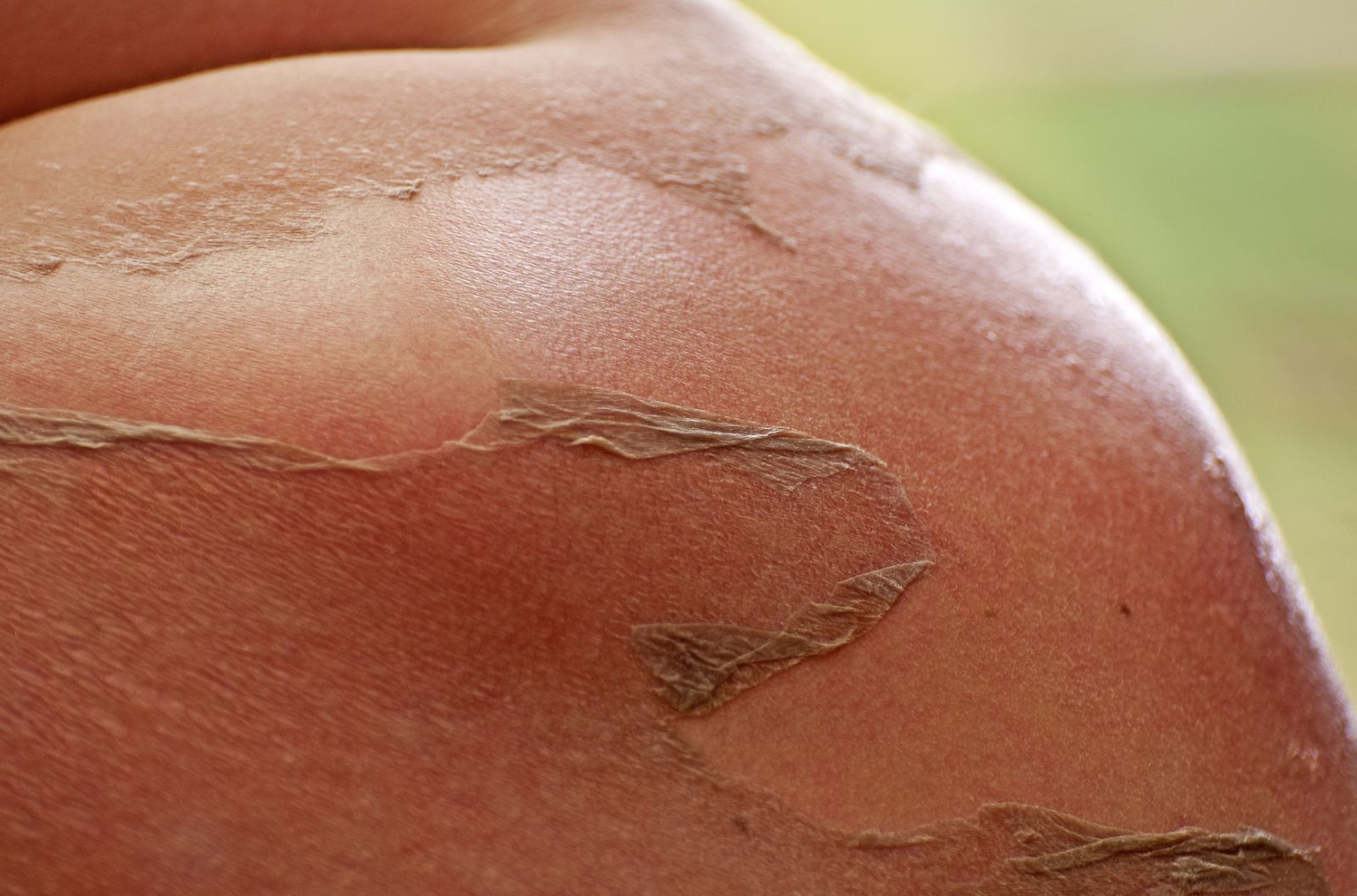Welcome to the DermacenterMD Blog
Posts for tag: avoid the sun

A sunburn is the pink to red color our skin becomes as a warning sign and reaction to being in the sun too long. Most of us have had at least one sunburn in our life. Understanding why it happens and the possible consequences can help us avoid this harmful reaction in the future.
Sunburn is the skin’s response to an excess amount of ultraviolet (UV) rays of the sun. The skin initially does not turn pink right away, but rather it often loses moisture and can feel tight or painful. The skin will begin to turn pink or red, which might not show up for hours after the exposure. Often we do not realize what has happened to our skin until it is too late.
Even as little as 10 minutes of intense UV exposer can burn the skin causing redness, tenderness and swelling. In response to UV rays, the outer layer of skin produces a tanning pigment called melanin. This melanin is a protective agent which blocks some of the harmful UV rays which normally penetrate the skin. Some of the harmful rays can cause damage to the skin’s DNA which can ultimately lead to skin cancer.
Sunburns can have harmful effects on the body, even years after exposure. Science has shown that even a single blistering sunburn in childhood or adolescence more than doubles a person’s chances of developing melanoma later in life. A person’s risk for melanoma, the most serious and potentially fatal form of skin cancer, doubles if he or she has had five or more sunburns. The two most common types of skin cancer, basal cell carcinoma and squamous cell carcinoma, are also directly related to sun accumulation over many years. The most common locations for these cancers are sun-exposed areas: the face, ears and hands.
It is so important to avoid sunburns if at all possible. The most useful tip to avoid sunburn is to avoid the sun and protect the skin. Wear sunscreen when you are outside, even for short periods. Sunscreens with an SPF of at least 30 or higher which contain one of the following ingredients: titanium dioxide, zinc oxide or parsol 1789 (avobenzone) are best. Also protective clothing and avoiding the sun a when it is at the worst, typically 10 a.m. to 4 p.m. is ideal. Protecting your skin is essential to your health and well-being. Be sun smart this summer and protect your skin from the harmful rays of the sun!
Archive:
Tags
- dry skin (2)
- moisturizer (1)
- sensitive skin (3)
- PA (2)
- Skincare (2)
- skin cancer (29)
- cancer (6)
- facts (1)
- skin (19)
- dermatology (22)
- skin care (19)
- cosmetic (2)
- wrinkles (1)
- Botox (4)
- Dysport (3)
- sleep (1)
- look good (1)
- daily routine (1)
- healthy lifestyle (1)
- doctor (2)
- patient (1)
- sun protection (5)
- sunscreen (14)
- aging dermatology (1)
- providers (1)
- tanning (2)
- sun (6)
- UVA rays (2)
- UVB rays (2)
- melanoma (10)
- Acne (2)
- Treatment (2)
- sunscren (1)
- sun exposure (5)
- Melanoma Monday (2)
- Skin Cancer Awareness Month (1)
- education (2)
- skin cancer specialist (1)
- basal cell carcinoma (1)
- squamous cell carcinoma (1)
- ingredients (2)
- improve your smile (1)
- cosmetics (1)
- laser (1)
- fillers (2)
- sunburn (3)
- avoid the sun (1)
- hat (1)
- sun clothing (1)
- SPF (1)
- Rosacea (3)
- NP (1)
- Nurse Practitioner (1)
- mid-level provider (1)
- physician (1)
- dermatologist (6)
- cosmetic dermatology (4)
- anti-aging (2)
- youthful looks (1)
- Eczema (2)
- rash (2)
- itch (1)
- the rash that itches (1)
- reduce itch (1)
- itching (1)
- getting along with others (1)
- basal cell (2)
- squamous cell (2)
- detection (1)
- Mohs surgery (2)
- photoaging (1)
- Inspiring (1)
- word of the day (1)
- inspiration (3)
- uplifting (1)
- protection (4)
- lips (1)
- reduce wrinkles (1)
- look younger (1)
- encouragement (1)
- never give up (1)
- you can do it (1)
- medical school (1)
- dreams (1)
- brown spots (1)
- moles (2)
- liver spots (1)
- age spots (1)
- Abe Lincoln (1)
- life lessons (1)
- lip cancer (1)
- health (12)
- motivation (1)
- work (1)
- people (2)
- home life (1)
- lifestyle (1)
- ABCDEs of Melanoma (1)
- mole (1)
- skin check (2)
- skin facts (2)
- odd (1)
- fun (1)
- interesting (1)
- lung cancer (1)
- disease (1)
- Christmas (2)
- gifts (1)
- sun burn (1)
- winter skin tips (1)
- itchy skin (1)
- winter skin (1)
- myths (1)
- myth busted (1)
- skin protection (1)
- sunscreen safety (1)
- specialist (1)
- red skin (1)
- irritation (1)
- feel good (1)
- helping (1)
- help (1)
- helping others (1)
- treatment options (1)
- skin health (9)
- Vitamin D (2)
- tanning beds (1)
- skin health. dermatology (1)
- sunshine (1)
- awareness (1)
- prevention (1)
- sun damage (3)
- connections (1)
- working together (1)
- health care (1)
- biotin (1)
- medical (1)
- aging (1)
- elkhart (1)
- Roger Moore (1)
- check (1)
- skin type (1)
- skin cancer prevention (1)
- gift guide (1)
- Christmas gift guide (1)
- Dr. Roger Moore (1)
- holidays (1)
- family history (1)
